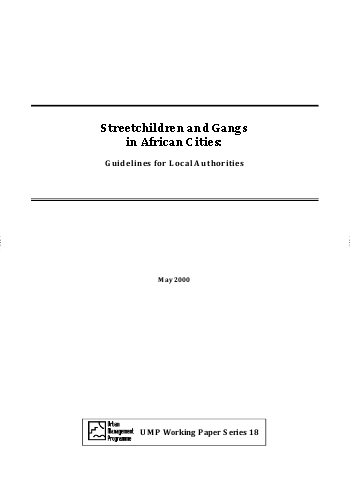
The problem of street children is well documented in Latin America and South-East Asia. However, in Africa it is a comparative by new phenomenon. Sub-Saharan Africa is currently the least urbanized region of the developing world, with about 30 percent of the population living in cities. Catching up fast, Africa is currently experiencing the highest urban growth rates. Local authorities in Africa are increasingly confronted with a rising number of street children and all too often do not quite know how to deal with this growing problem. It is thus the objective of this report to provide guidelines for local authorities in Africa on how to deal with street children in their cities. This is done by: • Providing an overview of the issue of street children in general; • Providing an overview of the issue of different roles local authorities can play when addressing the issue of street children. Street children refers to children in urban areas who have completely or partially ruptured family ties and engage in various survival activities on the streets. To the general public, these children are considered a nuisance. Obviously, extreme deprivation and social exclusion create opportunities for crime involvement. However, little evidence exists to suggest that street children actively or deliberately plan criminal activities. They perceive themselves as discriminated against and hated.
Resource collections
- UN Habitat - Urban Response Collection
- Urban Response - Urban Crisis Preparedness and Risk Reduction
- Urban Response Collection - Community Engagement and Social Cohesion
- Urban Response Collection - Economic Recovery
- Urban Response Collection - Environment and Climate Change
- Urban Response Collection - Housing, Land and Property
- Urban Response Collection - Urban Crisis Response, Recovery and Reconstruction
- Urban Response Collection - Urban Resilience
